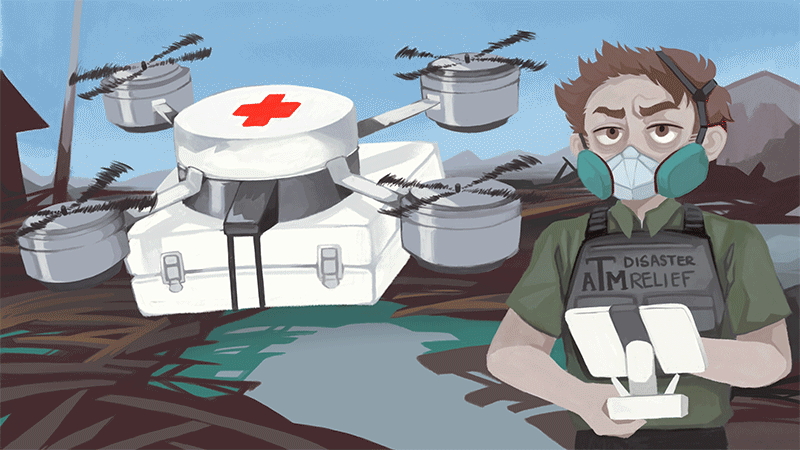Drone pilots need rest periods during disaster operations, research shows

Texas A&M University scientists studied pilots following Hurricane Harvey, the Kilauea volcanic eruption and Hurricane Michael, finding that drone flights are remarkably more fatiguing than previously thought.
Based on these findings, the researchers suggest drone pilots be subject to the same considerations for rest breaks and routine schedules as airline pilots, and new protocols created to help alleviate the possibility of human error.
The team of scientists, led Ranjana Mehta, Camille Peres and Robin Murphy, with funding from the National Science Foundation, presented three papers on their results at the 10th International Conference on Applied Human Factors and Ergonomics in Washington, D.C., in July.
Airline pilots and medical evacuation helicopter pilots are subject to regulations, and the cockpits and procedures are tested to make sure that they minimize human error. However, public safety pilots who fly small drones (also known as Unmanned Aerial Systems, or UAS) have no such guidelines. With use growing, the chances for incidents are increasing.
Drone crews often work long, irregular hours; however, the assumption has been that small UAS were sufficiently easy to operate, and that they could be flown anytime, anywhere with little risk.
The recently released national public safety standard from the National Fire Protection Agency for using UAS in public safety operations does not address crew fatigue. This has implications for how many pilots are needed to cover a disaster, in part due to the lack of scientific data. The papers offer a foundation for preliminary standards, though additional research is needed.
The studies tracked 16 experienced drone pilots with the Center for Robot-Assisted Search and Rescue (CRASAR) and the Florida State University Center for Disaster Risk Policy at the three disasters. The pilots’ heart rate and psychomotor responses were recorded and showed that by the third day of each deployment, the pilots showed elevated levels of fatigue.
After only a day at one deployment (Hurricane Harvey), pilots showed a level of fatigue impairments equivalent to those of alcohol intoxication at 0.05 percent, which is above the legal limit for manned aviation pilots (0.04 percent). During Hurricane Michael, where the pilots flew the most regular schedules, the fatigue was less, though human errors still occurred.
The fatigue levels matched self-reported incidents of human error or loss of situation awareness, all of which were minor and did not impact the responses, but highlight the possibility for major problems.

